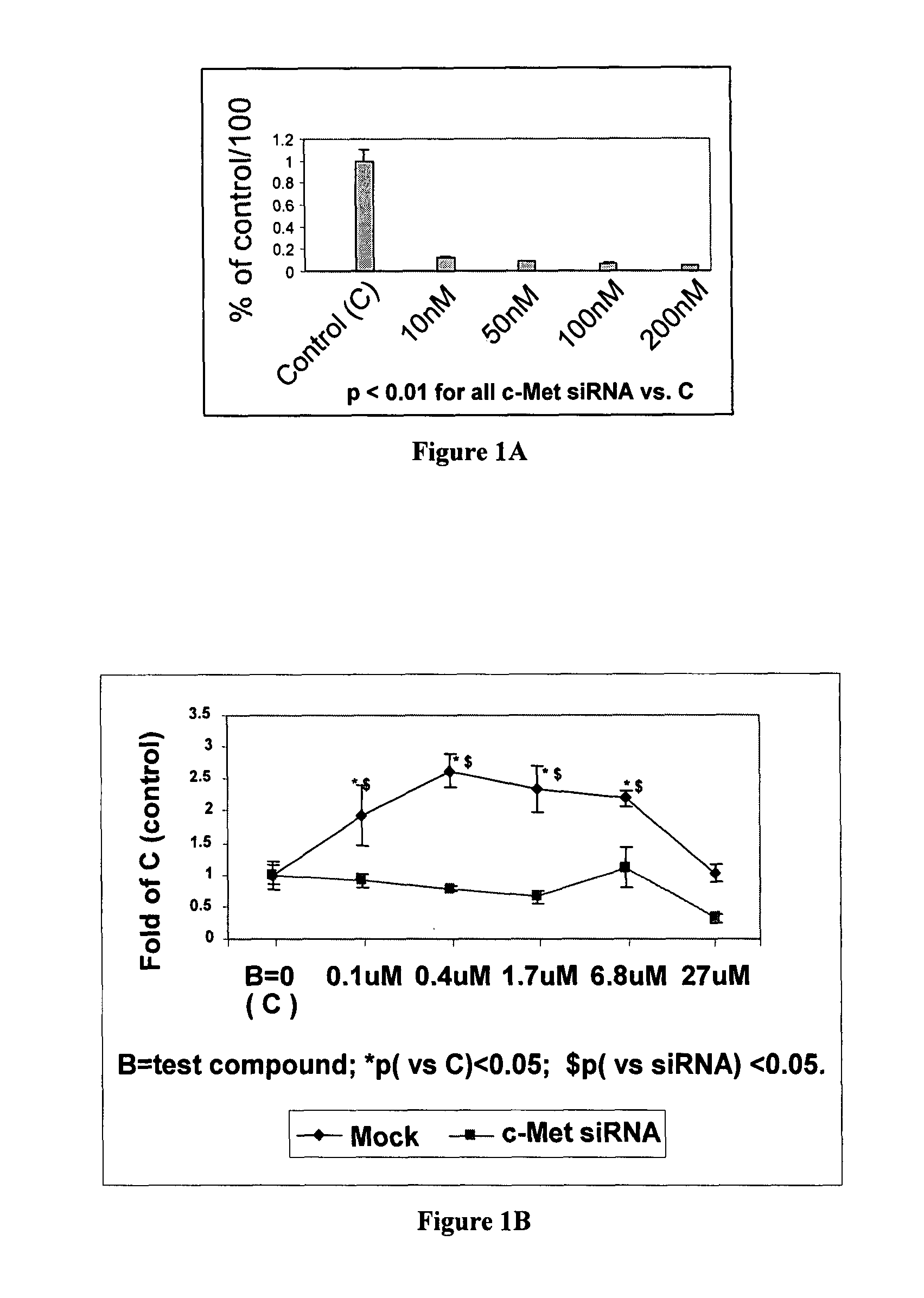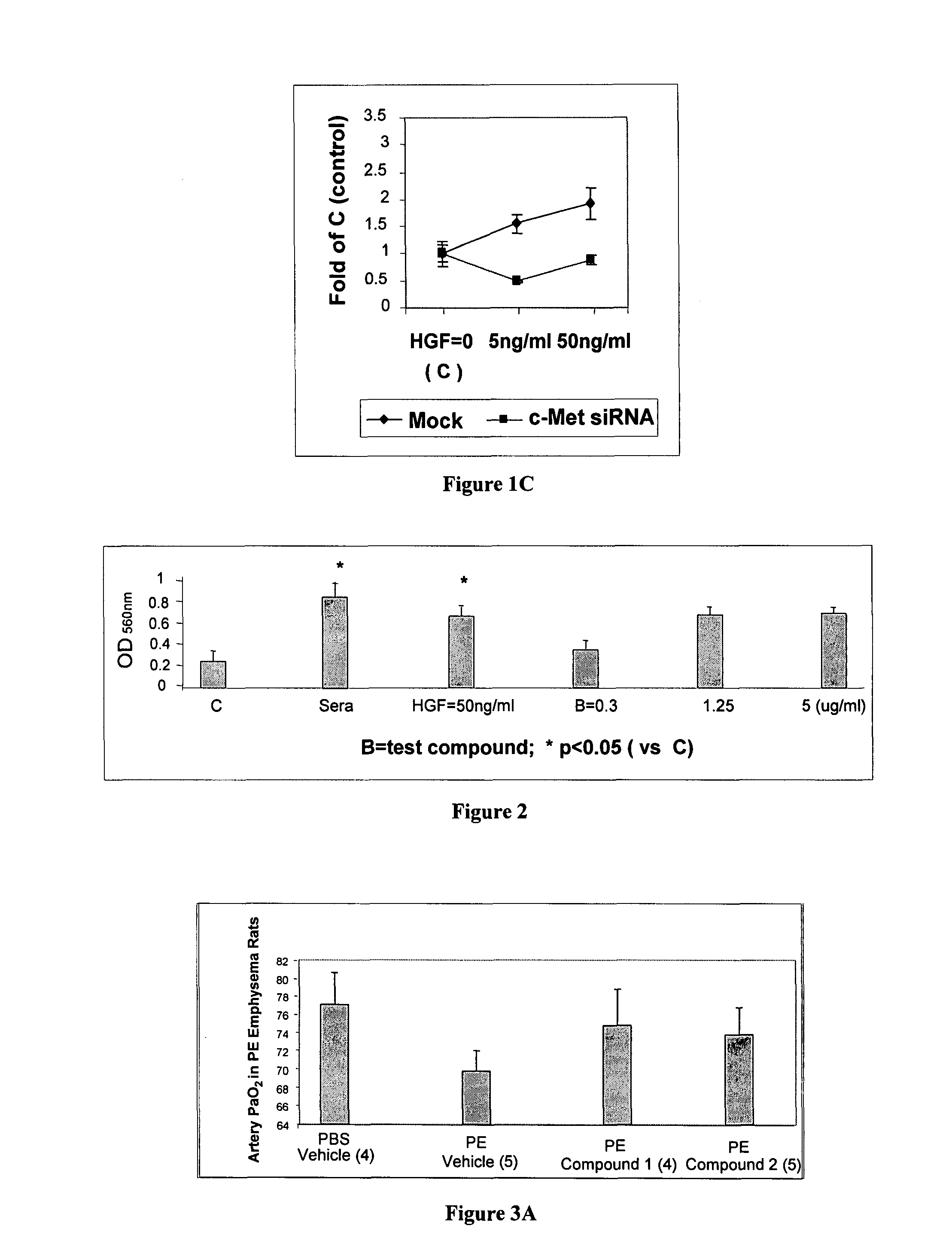Hepatocyte growth factor pathway activators in chronic obstructive pulmonary disease
- Summary
- Abstract
- Description
- Claims
- Application Information
AI Technical Summary
Benefits of technology
Problems solved by technology
Method used
Image
Examples
example 1
Biological Activities of Compounds In Vitro
[0627]Compounds promote proliferation of pulmonary endothelial cells specifically through c-Met. Proliferation of pulmonary endothelial cells is one of the important pulmotrophic activities of HGF. To show that inventive compounds, like HGF, exhibit proliferative activity and the activity is specifically mediated through the HGF receptor c-Met, a cell proliferation assay was performed using bovine pulmonary endothelial cells (bPAEC) in combination with the siRNA technique. First, a c-Met siRNA was used with a lipo-transfecting reagent to knock down the c-Met mRNA level in bPAEC cells, and real time RT-PCR conducted to measure the effect. The c-Met siRNA can knock down ˜90% of c-Met mRNA at a c-Met siRNA concentration as low as 50 nM. Next, the siRNA knockdown condition established from the first step was used to decrease >=90% of c-Met mRNA in bPAEC by using 100 nM of the c-Met siRNA pool, and subsequently 3H-thymidine incorporation assay w...
example 2
Biological Activities In Vivo
[0632]A pilot study was carried using the same compound described above (Compound 1) as well as 4-[4-(1-homopiperidinyl)phenyl]-1-(2H)-phthalazinone (compound 2). Co-treatment was evaluated in the porcine pancreatic elastase (PPE)-induced emphysema mouse model to assess the biological functions of inventive compounds in emphysema. Briefly, under anesthesia with a mixture of xylazine (0.4 mg / ml) and ketamine (0.8 mg / ml), a tracheostomy was performed on the mouse, and a dose of 0.25 U / g body weight of porcine pancreatic elastase (PPE) (Innovative Research, Inc. Southfield, Mich.) dissolved in 50 μl of PBS, or 50 μl of PBS alone (for PBS control mice) was slowly injected into the trachea through the small incision via a syringe with a 25 G needle. After extubation, the mice were returned to their cage and maintained under regular care. The next day, the PPE-instilled mice were randomly divided into groups and received daily administration via i.p. route of ...
PUM
 Login to View More
Login to View More Abstract
Description
Claims
Application Information
 Login to View More
Login to View More - R&D
- Intellectual Property
- Life Sciences
- Materials
- Tech Scout
- Unparalleled Data Quality
- Higher Quality Content
- 60% Fewer Hallucinations
Browse by: Latest US Patents, China's latest patents, Technical Efficacy Thesaurus, Application Domain, Technology Topic, Popular Technical Reports.
© 2025 PatSnap. All rights reserved.Legal|Privacy policy|Modern Slavery Act Transparency Statement|Sitemap|About US| Contact US: help@patsnap.com



